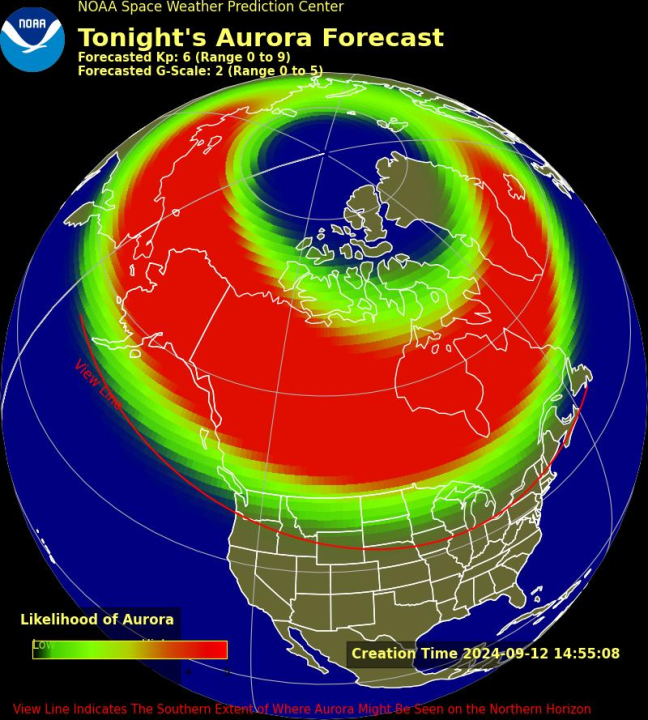(NEXSTAR) — The sun is deep in its solar cycle, sparking a strong solar flare and geomagnetic storming that could bring the northern lights to parts of the U.S.
NOAA’s Space Weather Prediction Center warned earlier this week about geomagnetic storming sparked by a coronal mass ejection. That lingered into Wednesday, when the SWPC again issued a geomagnetic storm watch for Thursday (technically, SWPC said Friday, but the agency uses UTC time, which is five hours ahead of Eastern time).
Early Thursday morning, the SWPC reported an X-class solar flare — “not common,” the agency said, but “not necessarily unusual” at this point in the solar cycle — had been detected. The SWPC issued an extended warning for strong geomagnetic storming through Thursday evening.
What does this all add up to? A chance for at least some in the U.S. to see a glimmer of the northern lights.
The northern lights appear when coronal mass ejections are hurled out by the sun, sending plasma and magnetic material to collide with Earth’s magnetic field. Particles flow along the currents to the poles, interacting with oxygen and nitrogen in the atmosphere.
Those interactions form excess energy, which appear as bursts of light we know as the aurora. The gases involved and where the action is happening determine the colors that we see.
That activity in our atmosphere is known as geomagnetic storming. The stronger the storm, the further south the northern lights can be seen. Geomagnetic storms are measured on a five-point scale, ranging from G1 to G5.
The SWPC said Thursday morning that G3-level storming had been recorded. The agency warned it could pose possible impacts to infrastructure, satellite operations, and GPS systems, all areas that experts say are prepared for such events.
For those seeking the northern lights, current forecasting shows viewing will likely be limited to those in the northernmost United States.
As usual, Canada and Alaska have the best chances of seeing the aurora on Thursday, according to the SWPC’s forecast. Those in all or part of 17 states — Washington, Oregon, Idaho, Montana, Wyoming, North Dakota, South Dakota, Nebraska, Minnesota, Iowa, Wisconsin, Illinois, Michigan, New York, New Hampshire, Vermont, and Maine — there is a possibility, albeit low, that the northern lights may dance across the sky.
Unfortunately for the U.S., the strongest geomagnetic activity is being recorded during our daylight hours, meaning we could miss out on some of the best aurora.
When the geomagnetic storm conditions are weaker, and the aurora-spotting likelihood lower, experts recommend looking at the northern horizon to get a glimpse of the celestial show. You may have to use your smartphone to see it, since those devices are more sensitive than our eyes.
As of Thursday morning, the aurora forecast for Friday is not nearly as promising. But, because space weather forecasting can change rapidly, so too could the forecast.
We also know solar activity is likely to continue over the next year or two. The sun is progressing through an active pattern known as Solar Cycle 25 in which it flips its poles. As we near the peak of that 11-year cycle, researchers say we can expect to see more strong solar storms — and, hopefully, more strong bouts of the northern lights.
